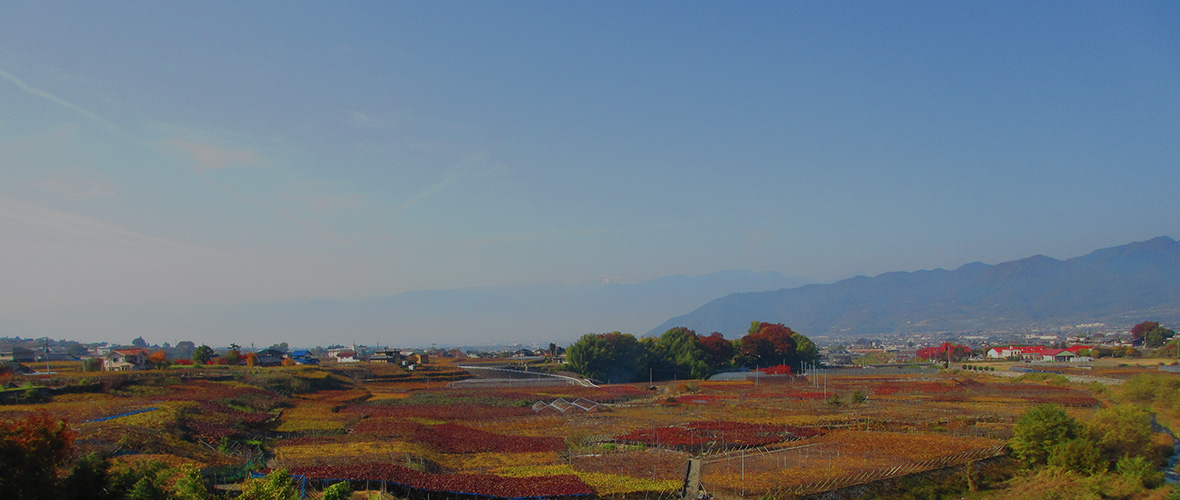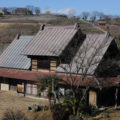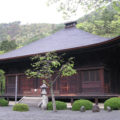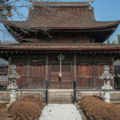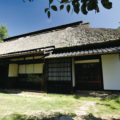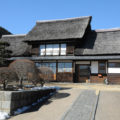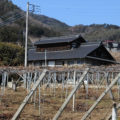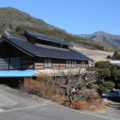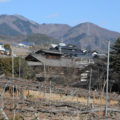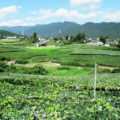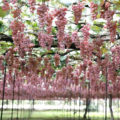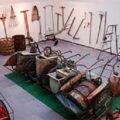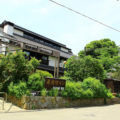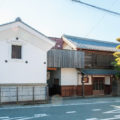Story2. The vineyard that spread
In the Kyotoh area (Kofu Basin Eastern) in the Meiji era, sericulture became popular in homes with “roofs with windows” that were raised up the central part of the building in order to let in light, which was known as the “Koshu gable.”
However, from the middle of the 1950s, the sericulture industry fell into decline due to the popularity of synthetic fibers, and sericulture farmers switched over to fruit cultivation, including highly profitable grapes, and the grape trellises stretched all the way to the fronts of houses in order to increase yield in the limited cultivation area.
Vineyards spread to every nook and cranny in the area, and a unique type of scenery was formed in which not only did the farms but also the temples, including Daizenji Temple and Seihakuji Temple, appeared to be floating on a sea of vines.
Also, in the Katsunuma district, there are remains of the semi-basement storehouses that were used for temporarily storing the cultivated grapes. By doing so, it became possible to regulate the shipping volume, and supplying and pricing for cities could be stabilized, which led to an increase in grape production. These storehouses were used until refrigerators came into use in about the 1950s.
With the opening of the Sasago Tunnel on National Route 20 in 1958, a direct connection was made with the cities of Tokyo and Yokohama, which made grape cultivation even more popular. Also, with the development of motorization, tourists from the capital city area increased, and the grape sightseeing areas along the main roads expanded. Even now, during the harvest season, many tourists come to enjoy grape gathering.

